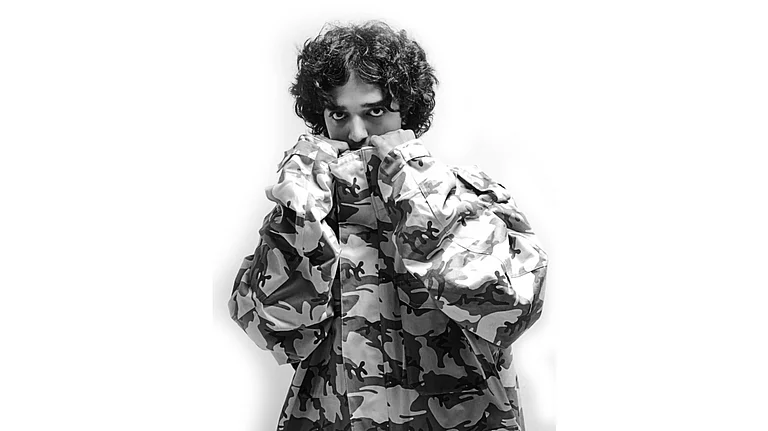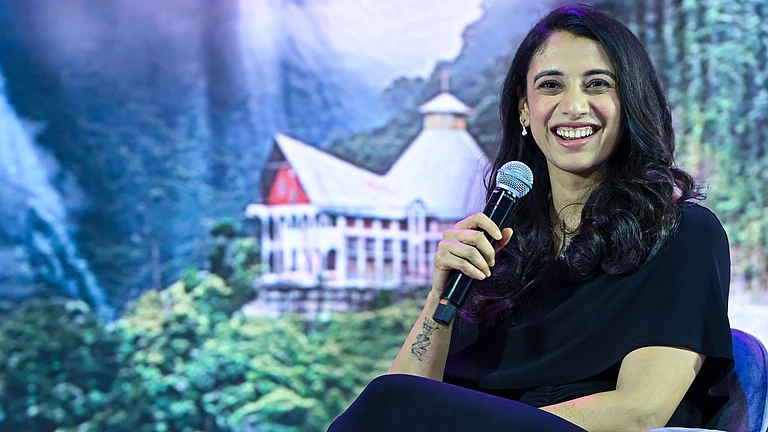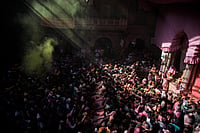In the context of the recently released biopic Chamkila, which is based on the Punjabi artist Amar Singh Chamkila, the complex relationship between art and vulgarity is once again in the spotlight. This issue is also topical to Bhojpuri music. Of late, the concern for suppression of vulgarity in Bhojpuri music has arisen from various quarters. Besides the discussions in the Bihar Legislative Assembly, the UP Chief Minister Yogi Adityanath announced that the state government shall not give grants to films with vulgar content, and noted Hindi journalist Ravish Kumar, who hails from the Bhojpuri speaking belt, has also raised concerns on excessive vulgarity and the objectification of women in Bhojpuri songs and its impact on the psyche of the youth, on his Bhojpuri channel Vihaan. Social activists have filed numerous litigations in courts so far.
When the issue of vulgarity in Bhojpuri art is so topical, there is an urgent need to understand this alleged vulgarity in its socio-cultural context because instead of engaging academically with the obscenity in Bhojpuri, it has become a trend to sanitise and wipe it out.
First, one needs to admit that there is no singular form of obscenity in Bhojpuri songs, rather there are different layers and shades to it. Therefore, while talking about Bhojpuri songs, it is important to differentiate between healthy obscenity and problematic obscenity, otherwise one runs the risk of typecasting the entire Bhojpuri music. Take for example, the Bhojpuri star Khesari Lal Yadav’s song: “Sej Par Kekra Sange Ladab, Sainya Arab Gaile Na (the husband has left for Gulf, whom shall I have ‘bedroom fights’ with?)”. People cut off from the Bhojpuri tradition will likely jump to declare this song as suggestive and even obscene. But the double entendre employed here expresses the sexual desire of the woman in a powerful manner. Here the 'fighting on the bed' metaphor means the woman's desire to make love with her husband in an active way. So this double entendre enhances the poetic beauty and messaging of this song and makes it more alluring.
Similar themes have historically been a part of India’s Bhakti literature. A love affair similar to the one shown in the above Bhojpuri song is called kaam yuddha (sex battle) in medieval poet Jayadeva's Gita Govinda (12th Canto). Jayadeva writes, "When Kama Krida (game of love) began, Radha, in order to win over her beloved in the sexual battle, tied Krishna in her arms, pressed him with the weight of her breasts, injured him through nails, teeth, pushed him by the buttocks, kissed him and satiated the beloved Krishna with vipreet rati (woman on top position)."
Now let us run the thought experiment where the erotic episodes of the Sanskrit text Gitagovinda are rendered into Bhojpuri and Khesari’s song is translated into Sanskrit. We would see then that the mood and sensibility of both will change drastically. Then the Gitagovinda will sound vulgar and the Bhojpuri song sublime. The reason for this is that we have not yet become comfortable with the idioms, gestures, and lexicon used in Bhojpuri to represent the themes of Desire and Erotica. That's why we find them scandalous, whereas if the same thing is expressed in Sanskrit (or English, for that matter), we are more comfortable with it.
Bhojpuri songs also frequently employ the double entendre allegorically. Take for example the song, “Sainya laika neeyan soot jala kora mein (my husband falls asleep like a toddler in my lap)”. In this allegorical song, the woman insinuates that her husband is like a little child, unaware of the art of erotica, hence her sexual desires are left insatiate. The dramatic expression of her love-pangs makes a strong satire on the sexual amateurism of the husband. Like a beautiful poem, the messaging in this song is rendered in subtle gestures. I posit that such Bhojpuri songs depict a healthy form of obscenity and thus double meaning in Bhojpuri language should be taken as literary device, rather than an object of snobbish sneering.
Moreover, the idea of illicit or extra-marital relationship depicted in Bhojpuri love songs is taken as an effective poetic device and a widespread norm, in which a triangular love affair is woven between the husband, the wife and the brother-in-law or another lover. For example: “Yaarwa naeharwa roye, piyawa sasuraal (While the lover sobs in ‘her’ parental home, the husband pines for her in the in-law's home). Here, the woman's love is divided between her lover and her husband, and she does not want to lose either of them. Generally, in Bhojpuri society, there is silence on the extra-marital relationship of men, but slut shaming is done on such relationships of women. In such a situation, these Bhojpuri songs create a ‘discursive atmosphere’ for such ‘forbidden love’ in favour of women by idolising them.
The exodus of men due to economic compulsion is another reason behind the proliferation of the themes of extra-marital love in Bhojpuri songs. Such songs typically show that while the husband is abroad, the wife is left pining for him, and in such a situation she advises the husband that she might ‘slip up’ in his absence, or perhaps the brother-in-law might take advantage of the situation. In terms of women's desire and gender, such songs hold immense potential for the transgression of patriarchal norms.
And the theme of ‘illicit love’ is not a new invention. Maithili poet Vidyapati has called illicit love unique. In one of his songs, the heroine says to her friend that “I got delayed because of lovemaking with another man”. Those who are obsessed with finding vulgarity in Bhojpuri songs, should find time to read Vidyapati’s Padavali (songs of Vidyapati), where Vidyapati has portrayed sexuality in its most primal form, where men and women unapologetically express their sexual fears and fetishes, and the same ideas reverberate in Bhojpuri songs as well.
This is not to say that all Bhojpuri obscenity is unproblematic. Take for example: "Aane do humko shasan mein, Russian bantwa denge ration mein (Vote us to power, we will supply Russian escort as ration)." Such songs are the products of a lewd male gaze, and from a gendered perspective, they re-instate misogyny and sexism in everyday life. But these songs do receive their share of all-round condemnation. The aim here is not to defend such pieces but to understand the various motifs of eroticism in the larger world of Bhojpuri art.
After the onset of digital media, a major change has happened i.e. Bhojpuri songs have gained a wider visual medium. In these songs, love is enacted through voluptuous gestures of the lover-couple, which creates a sensual scene. Because of such visual sensuality in these songs, they have been labelled vulgar and pornographic. But who is to decide the boundary of vulgarity? Will the sensual performances of English pop music like Nikki Minhaj's number ‘Anaconda’ fall in this category? And what sensory effects does Shakira's ‘My hips don't lie’ or Lady Gaga's strip dances have on their consumers? It is interesting to juxtapose the obscenity of Bhojpuri musical performances with that of English pop music, given the fact that our English-speaking middle class likes to consider itself superior to the Bhojpuri hoi polloi in terms of artistic taste.
To add to the complexity of the matter, there is also a rich tradition of obscene songs by women in Bhojpuri, mostly evidenced through the genre of Gari which are songs of affectionate abuse, sung on marriage occasions. These songs are also loaded with misogyny, but their sensibility changes drastically as they are uttered by women. When a man sings an abusive song, the sexism is more pronounced in it and the romantic connotation reduced, since men have historically been targeting the character and the sexual body of the woman through obscene language in social life. Obscene language has also been a tool of masculine power. But this is not so in the case of women. Hence the abuse songs generate a playful and coquettish vibe when sung by women.
In India, obscene and abuse songs have been sung on ritual occasions since ancient times. Sanskrit scholar Dr. Radhavallabh Tripathi points out that "Vedic and Sanskrit literature has evidence of singing obscene songs on occasions of Manglik (auspicious) rituals. On the occasion of the Vedic Mahavrata Yajna, a promiscuous woman and a brahmachari (celibate man) communicate in the obscene language”. Art historian Devangana Desai confirms that in ancient India and in other parts of the world, it was believed that "sex has magical power, it is auspicious, and obscenity has the ability to destroy sin, evil or inauspicious." Since ancient times, in India, sexuality was subsumed in cultural life in various ways to increase the fertility of nature, earth, rain, human, etc. Desai has examined below four major ways in which sex was employed for fertility purposes:
Through ritual copulation and celebration of marriage of deities,
Through speaking obscene language and making indecent gestures,
Through exposing of nudity and worship of female and male organs,
Through depictions of sex.
So, we would do well to understand the historical and cultural roots of obscenity in the Bhojpuri songs sung on various cultural-auspicious occasions rather than getting upset or morally judgmental about it.
Yet another form of obscenity in Bhojpuri is art of blue comedy or ribaldry. In the Bhojpuri musical genre of Dugola, Chaita and Virha, two or three groups compete in showering musically crafted bawdy slurs on each other. These bawdy slurs eventually degrade the character of women, but deep-down, decoding these bawdy slurs shows that the men are competing to cuckold each other. Be it in music or life in general, where two groups of men abuse each other's women, they are in fact cuckolding each other's masculinity and this process itself makes the contradictions of masculinity apparent and even ridiculous. On the eve of Holi in Banaras, there are poetic performances in which poems woven with swear words are blithely and comically recited. These poems irreverently mock the socio-political power centres through grotesque obscenity. But they give so much emphasis to phallocentrism that they also become problematic from the point of view of gender.
In Bhojpuri, the female voice device is used freely by men to sing romantic songs. In Launda Naach dance form, men perform dressed up as women. In his early films and songs, Khesari Lal Yadav used to crossdress and become a woman to act out 'female erotic desire'. This female act of his is so effortless that it automatically creates a strong queer ecology. Khesari's aurat abhinaya songs begin with the intention of creating humour and drama, but in their final form they have developed the ability to provoke queer desire. Several other megastars of the Bhojpuri world have done such numbers in their early days. Dinesh Lal aka Nirahua, Pawan Singh, and Ravi Kishan, all have cross-dressed and performed as women. Despite this, it is ironic that the Bhojpuri society, including these artists, has not become sensitive to gender concerns like effeminacy, transgenderism and queerness.
Many people enjoy the obscene Bhojpuri songs in their private space but condemn them in public. This is called guilty pleasure, which shows the hypocritical attitude of such people towards Bhojpuri language itself. No doubt there is misogyny in Bhojpuri, but this is also true that currently there are more than twenty female star performers in Bhojpuri, who are powerfully expressing their art and body on stage. Rather than being merely the objects of male pleasure, they have their own identity and agency. Such changes create the possibility of bringing qualitative changes in Bhojpuri. Do we want to recognise such changes happening in Bhojpuri art world?
It is well-worth remembering that the concern over obscenity in Bhojpuri goes back to colonial times when the British, the Christian missionaries and Indian nationalists and social reformers were all outraged by the cornucopia of obscenity shown in Holi and wedding songs. And out of their Victorian prudishness and Arya Samaj-kind of morality, they also undertook programmes of reform. Thus the rather puritan campaign going on today is not a new phenomenon. As art theoretician Dr. Brahm Prakash says, “the omnipresent obscenity spread in Bhojpuri songs is a manifestation of viscerality in which art communicates through the body and sensory. And that Bhojpuri obscenity has a lot of creative and aesthetic potential”. Thus, it is important to give Bhojpuri art, which mostly caters to the lower strata of society, the freedom it deserves just as it is the case with obscenity in the preferred language of the Indian elite, i.e. English.
(Dr Ajay Kumar Yadav is a post-doctoral scholar at the Centre for Political Studies, JNU.)

























